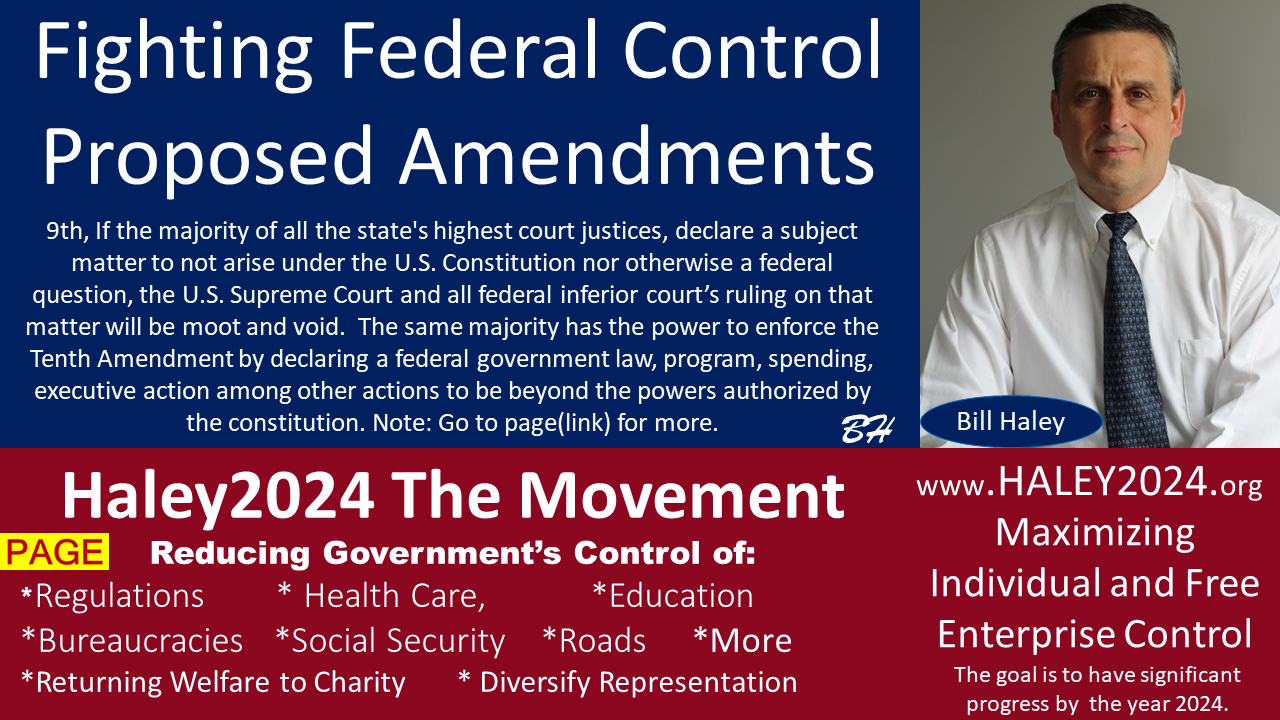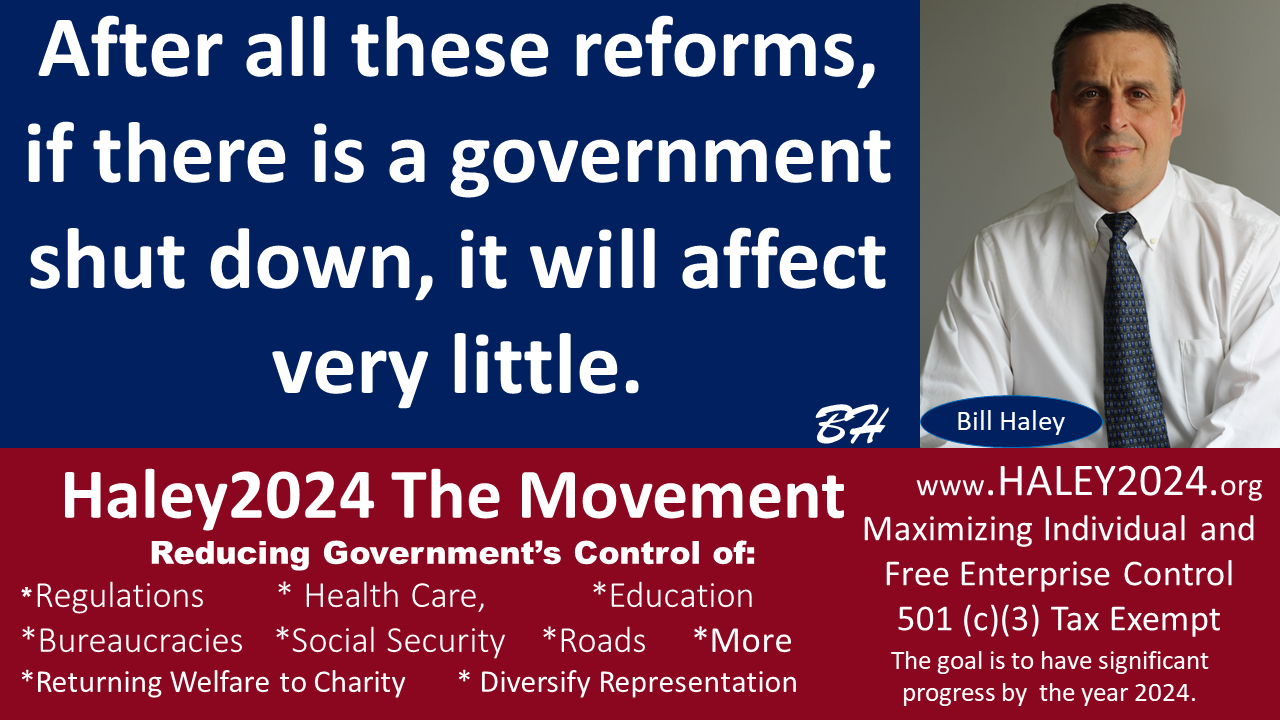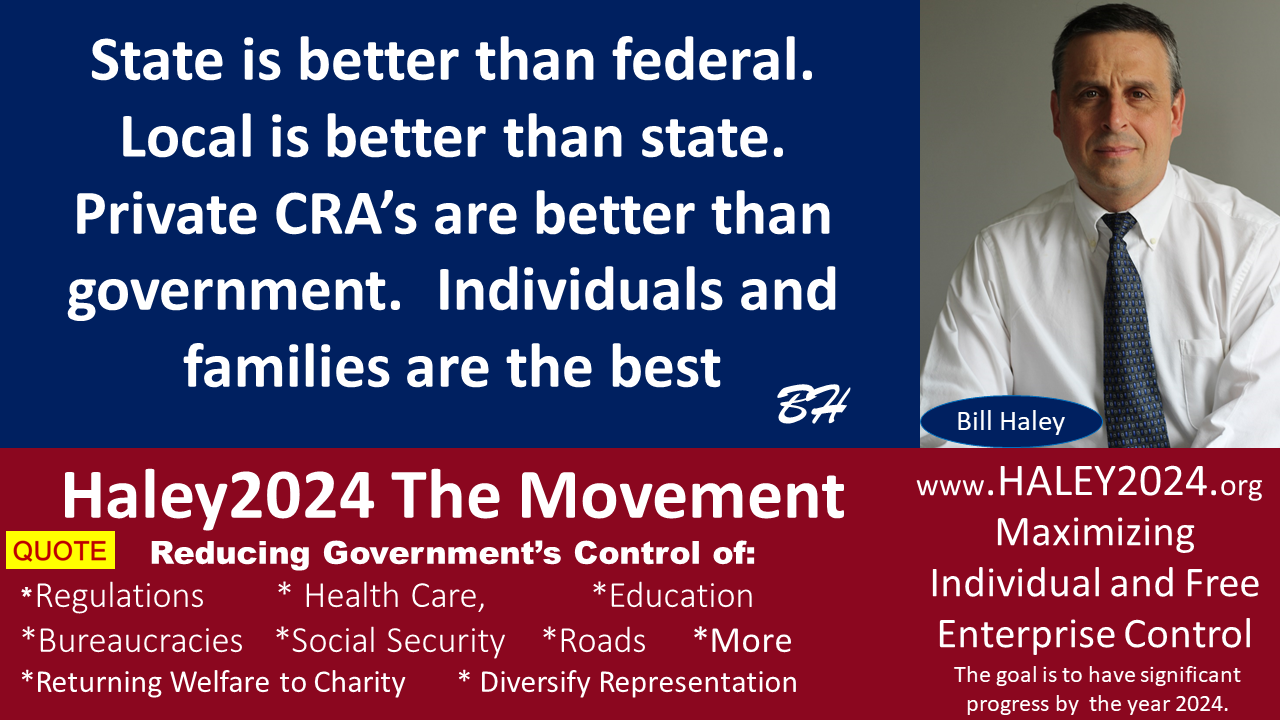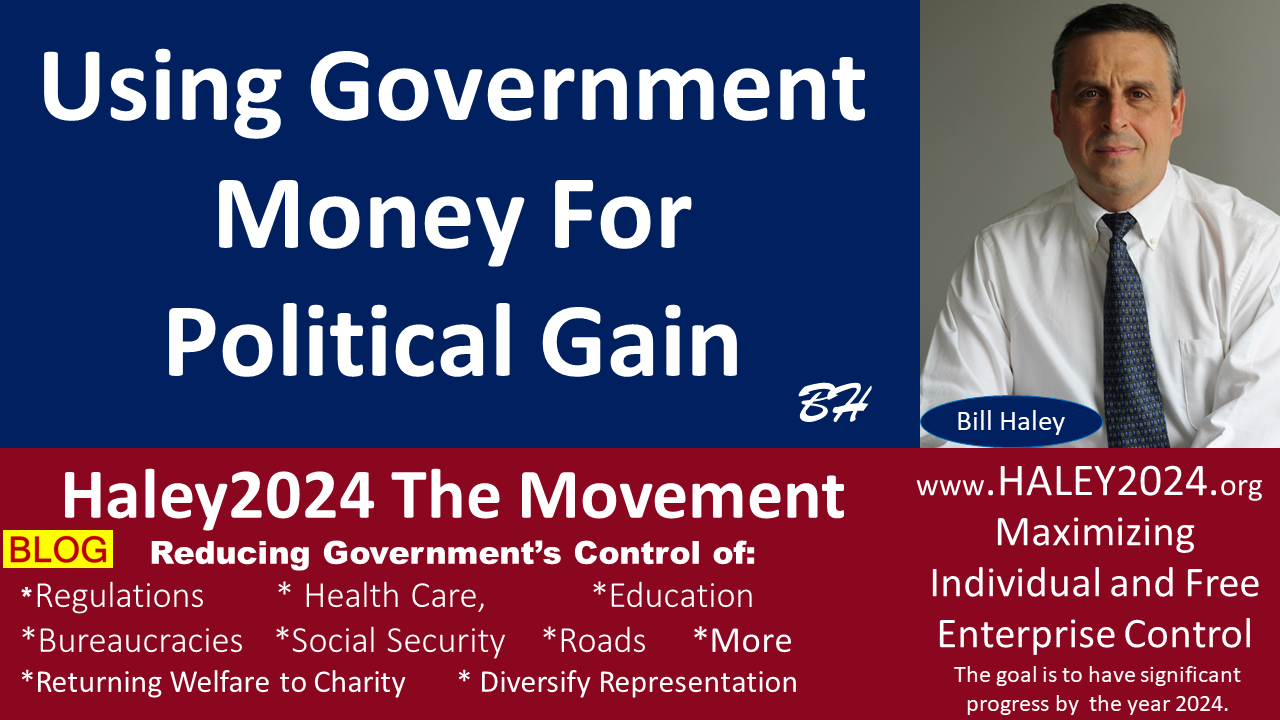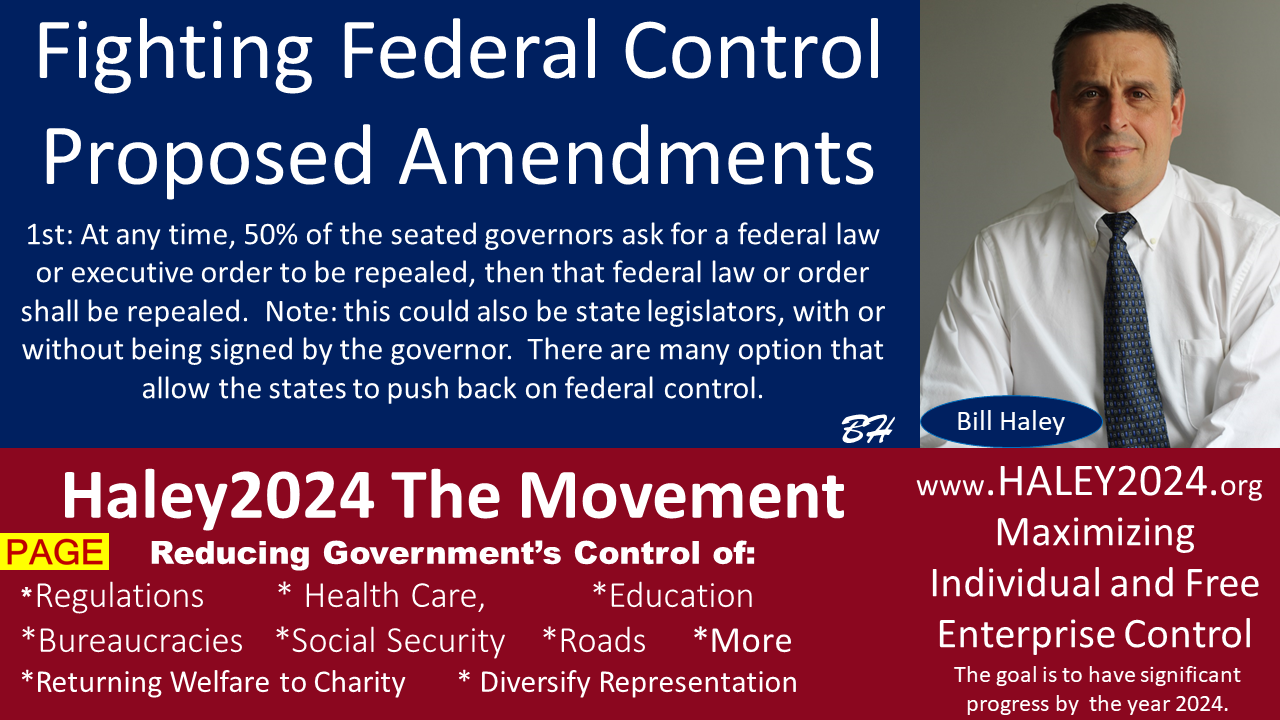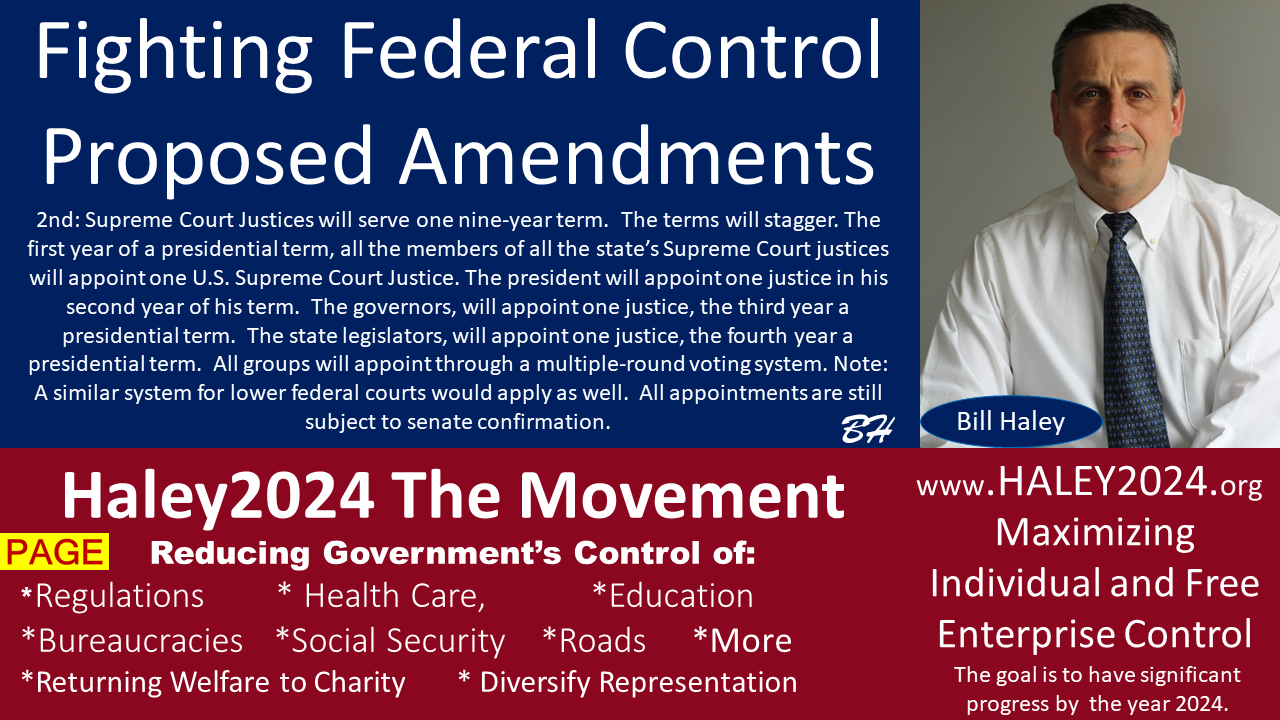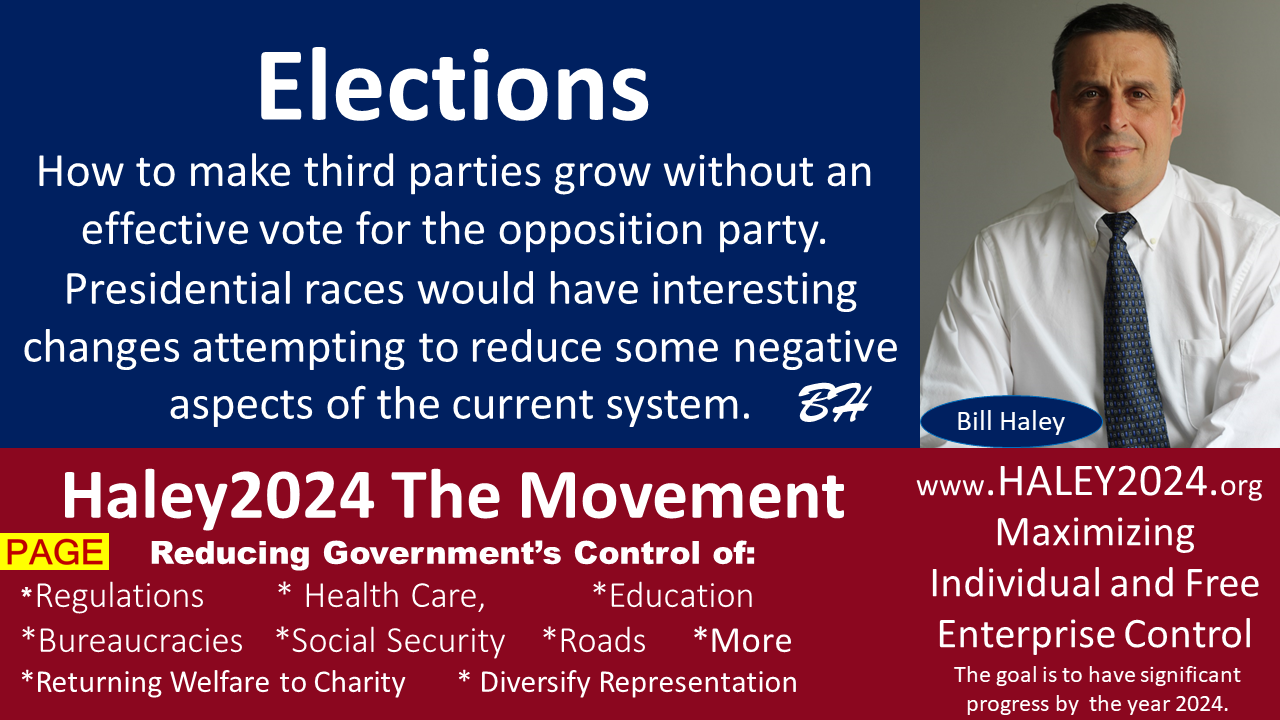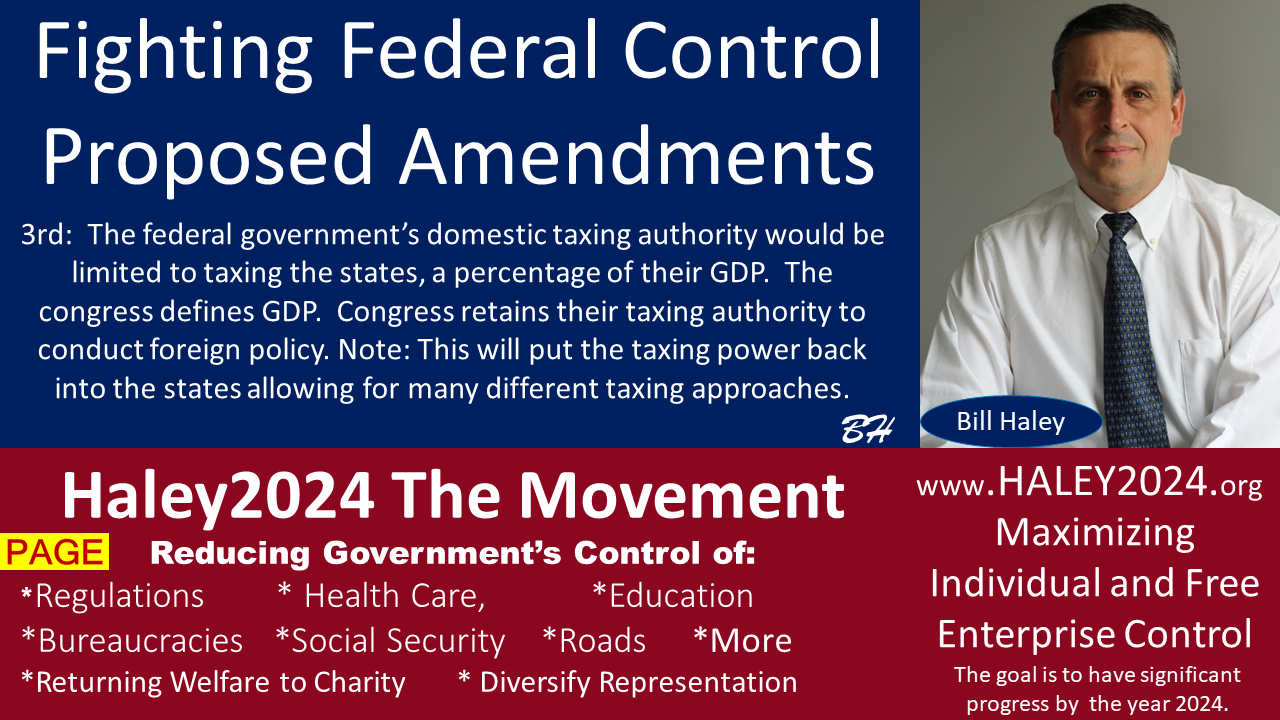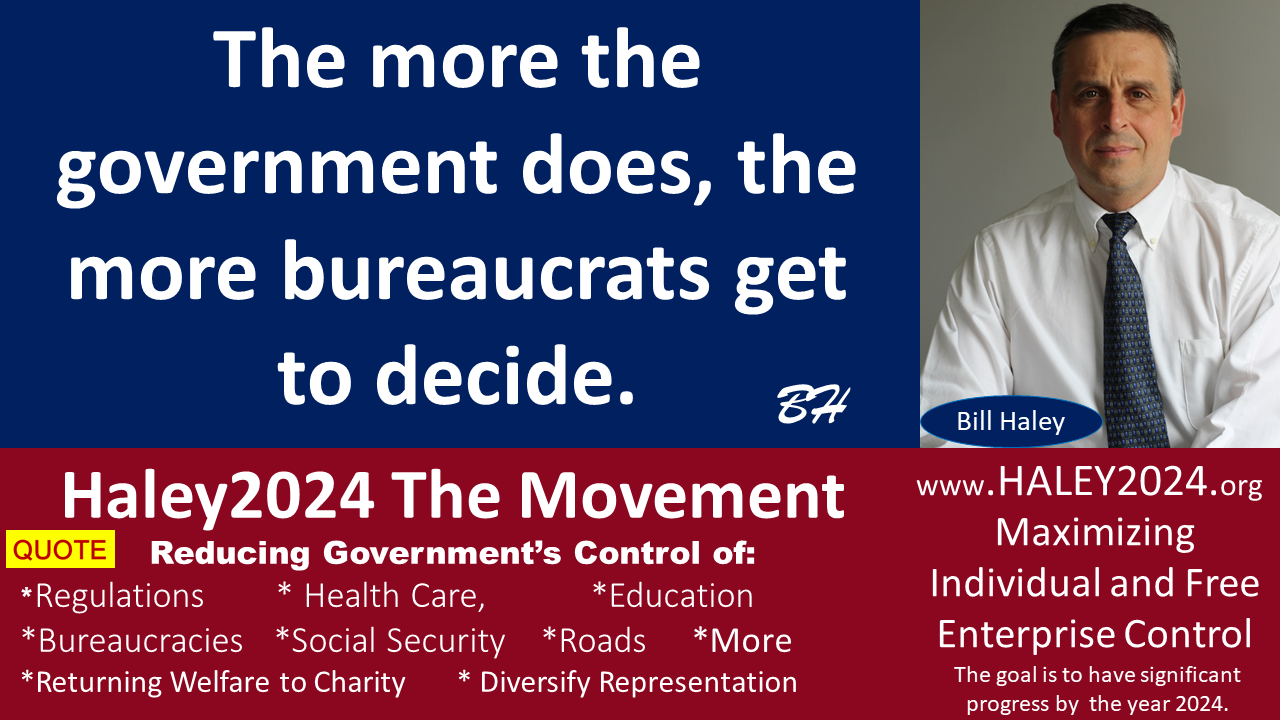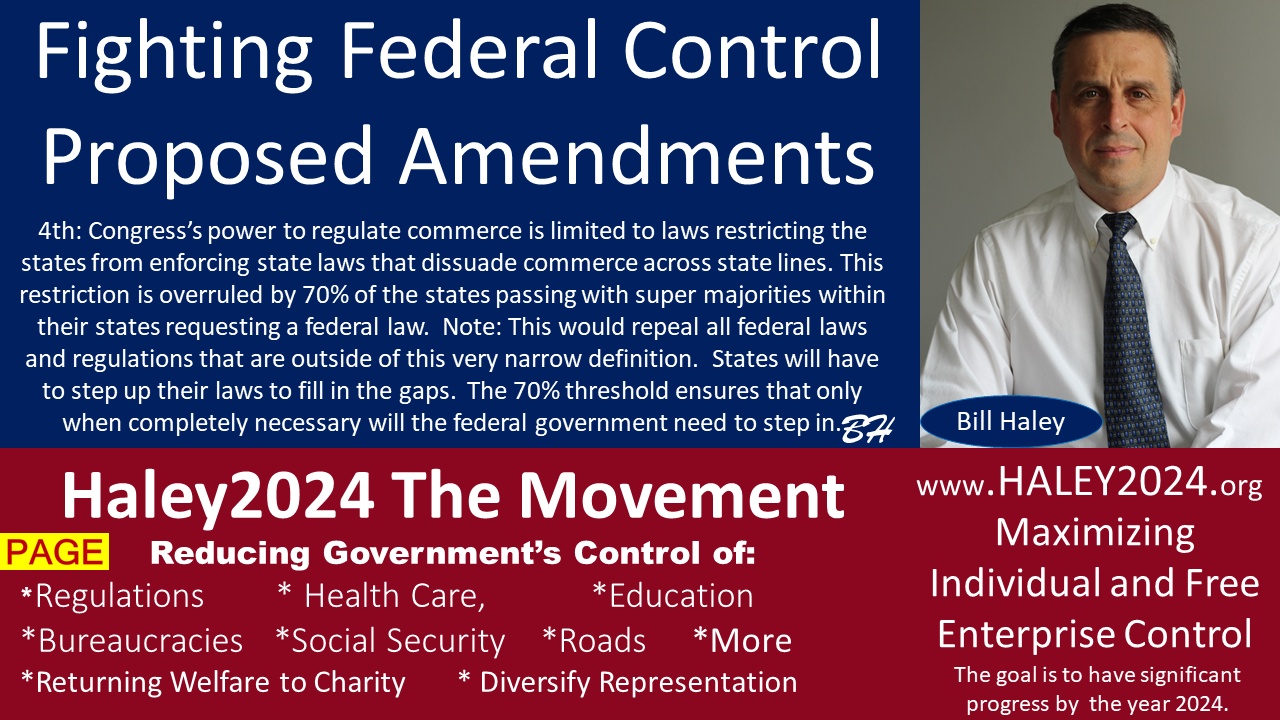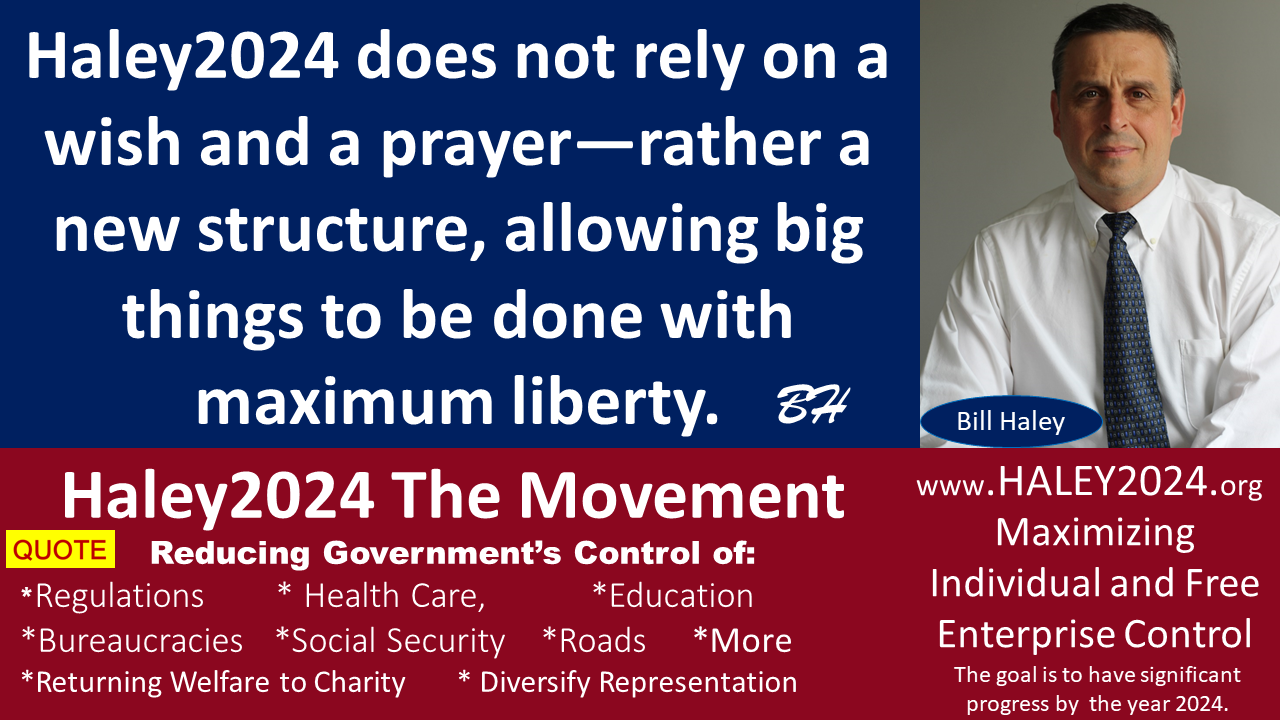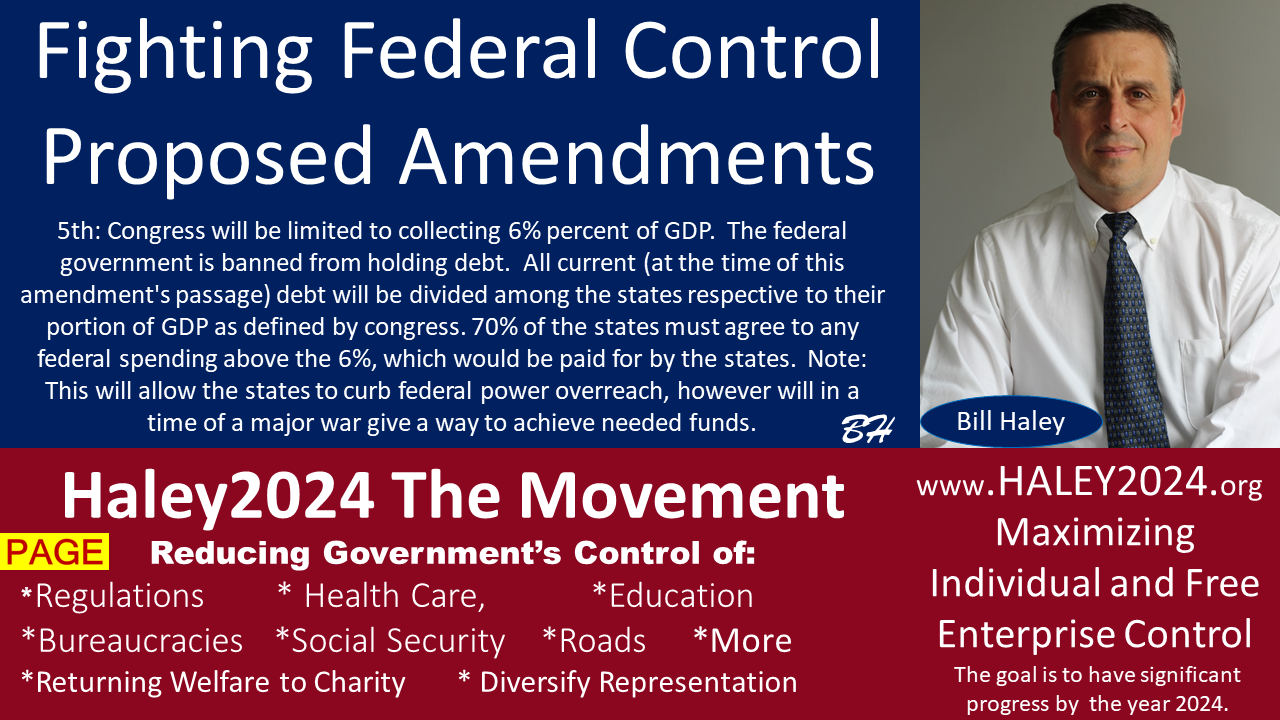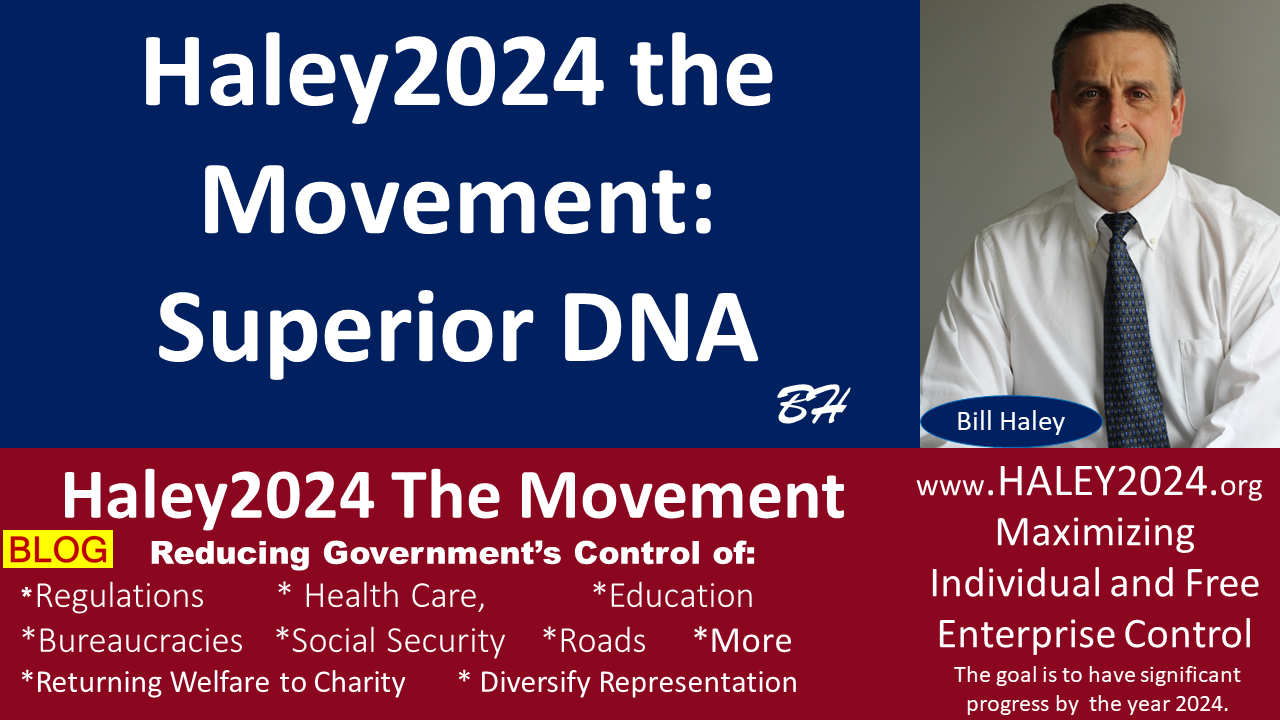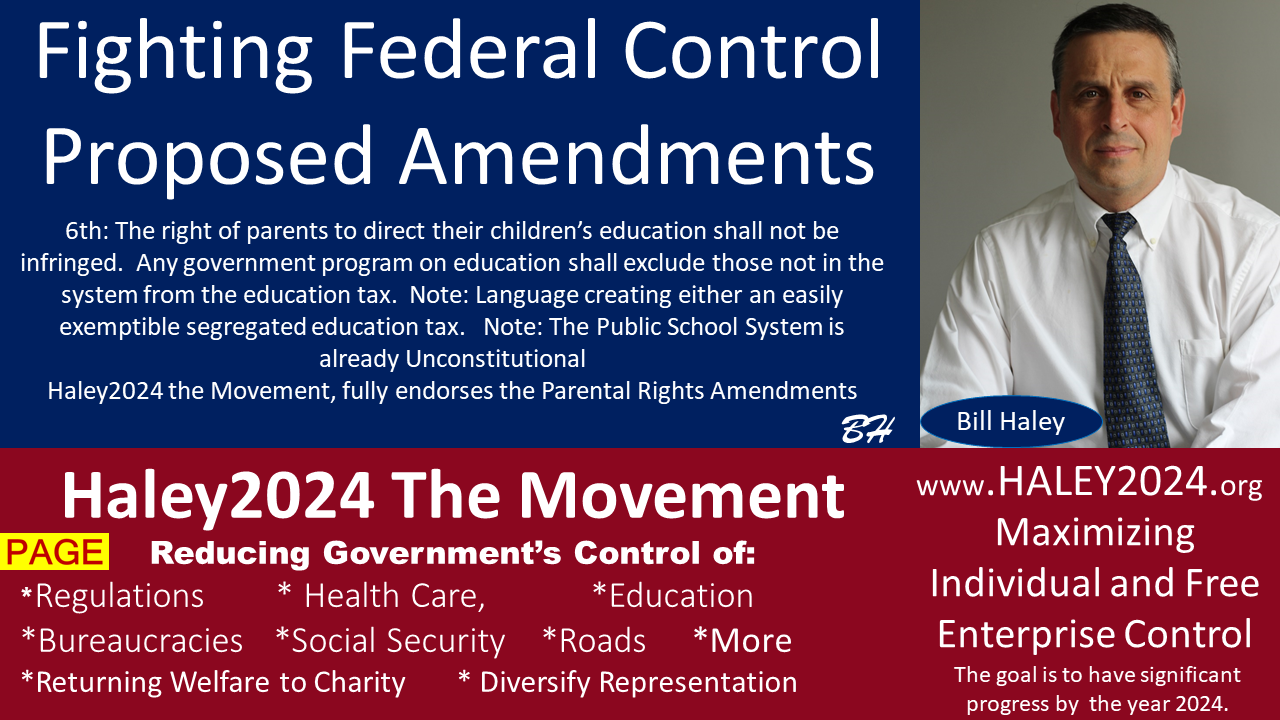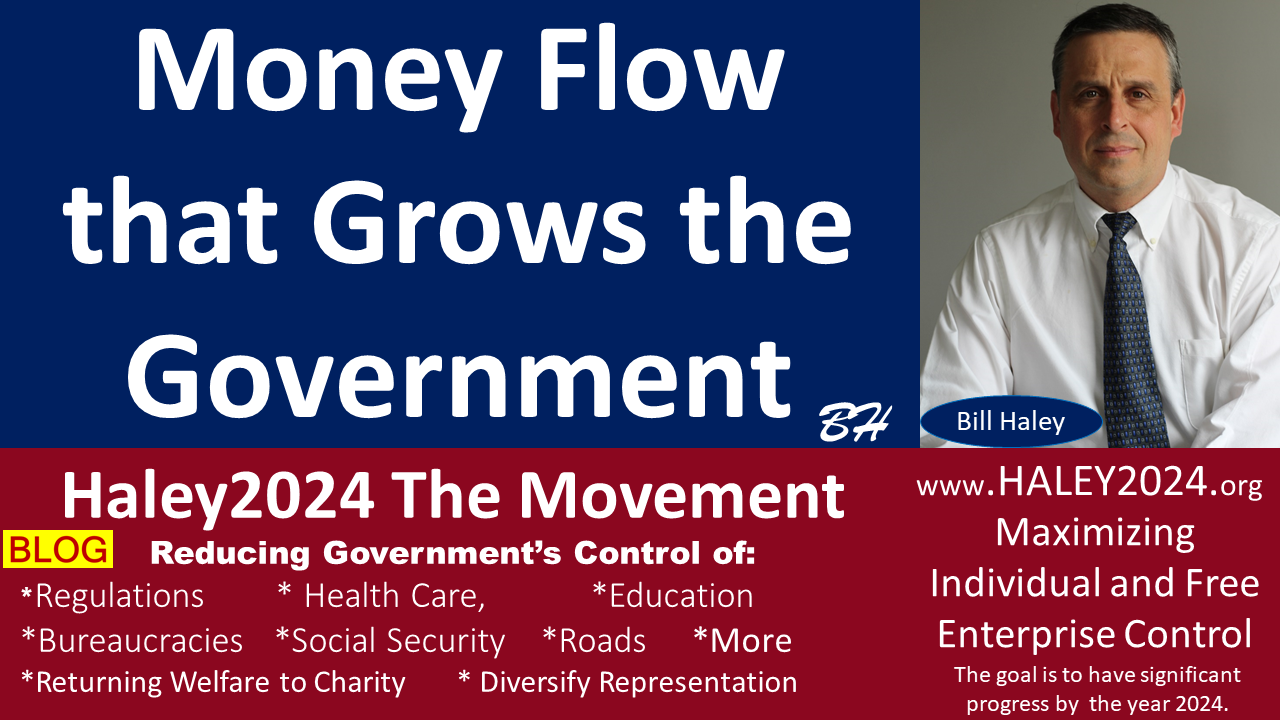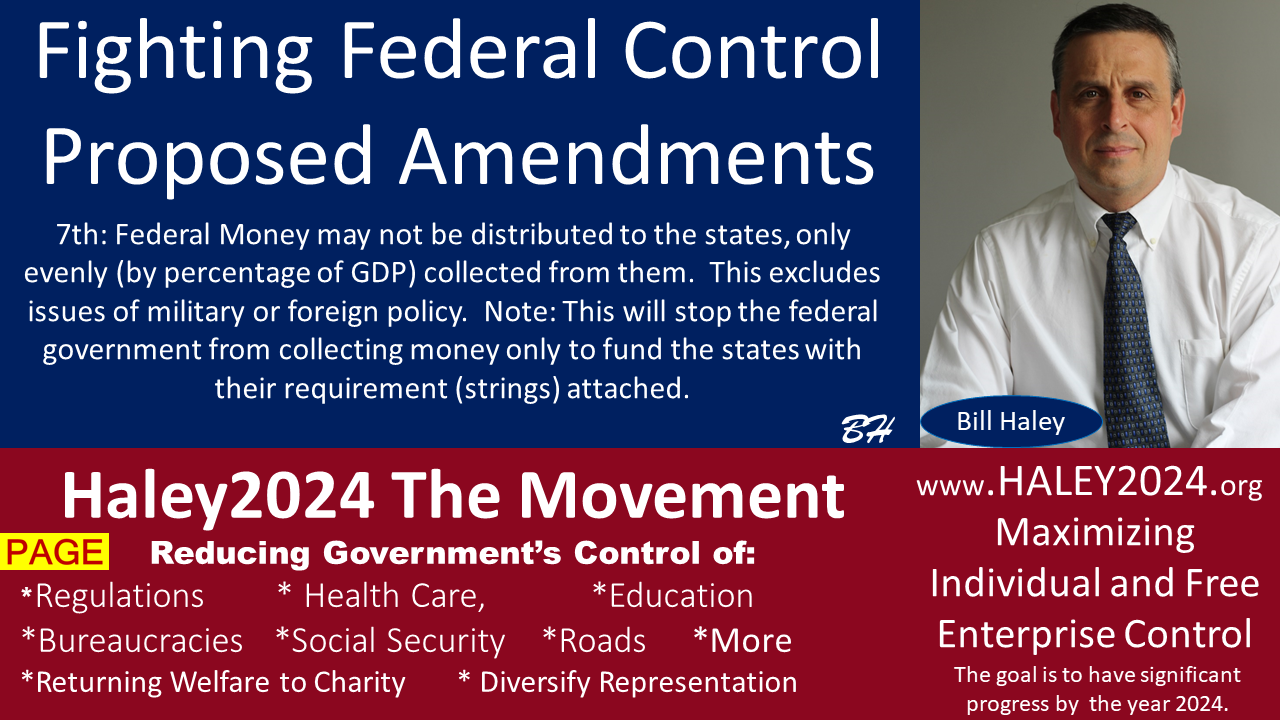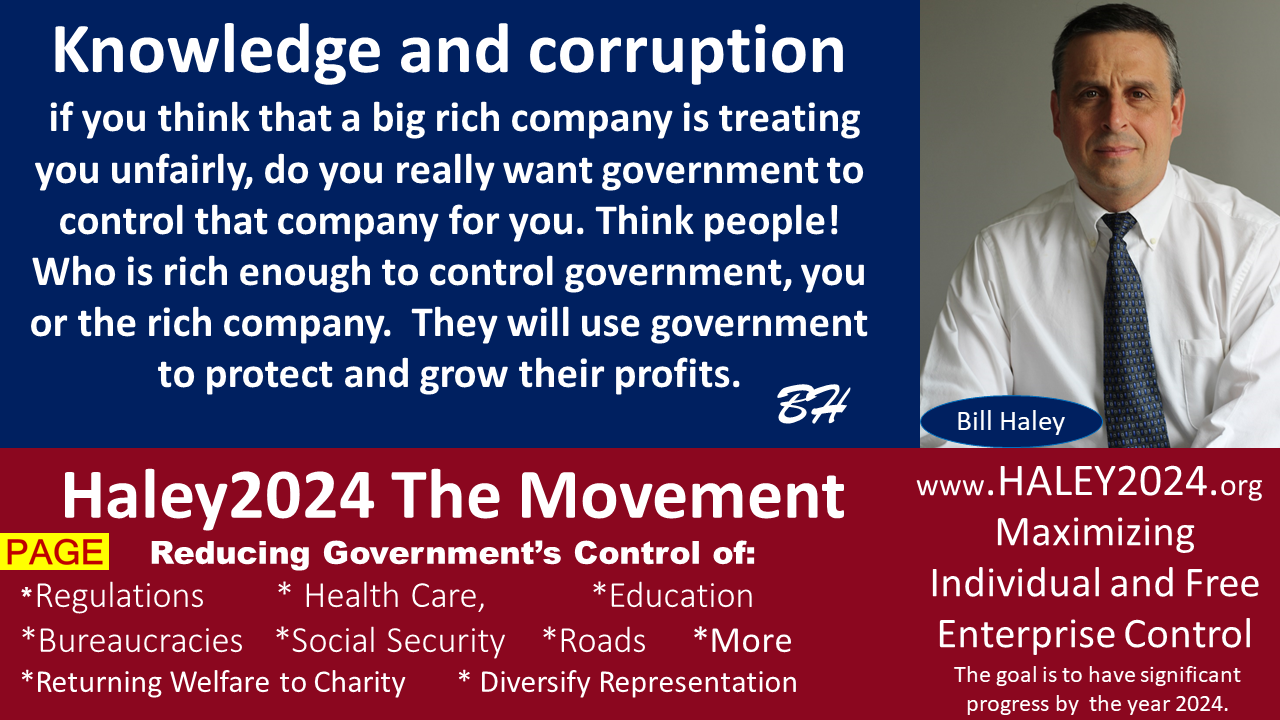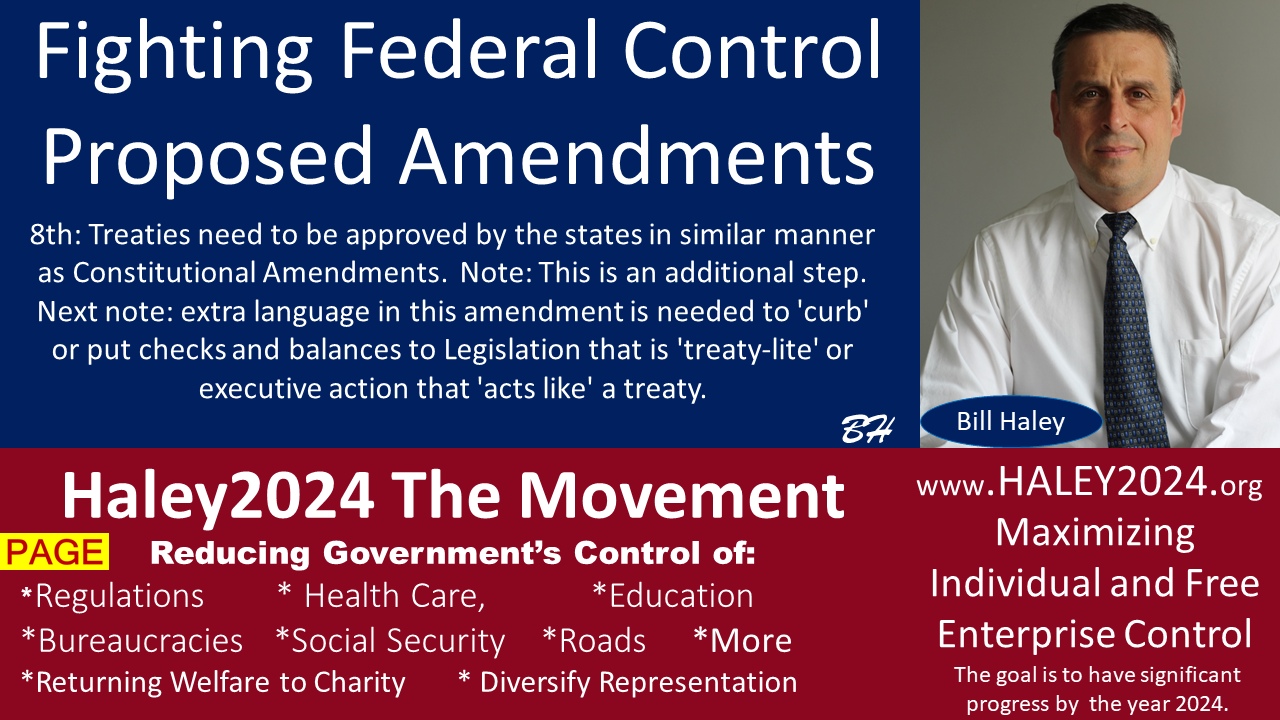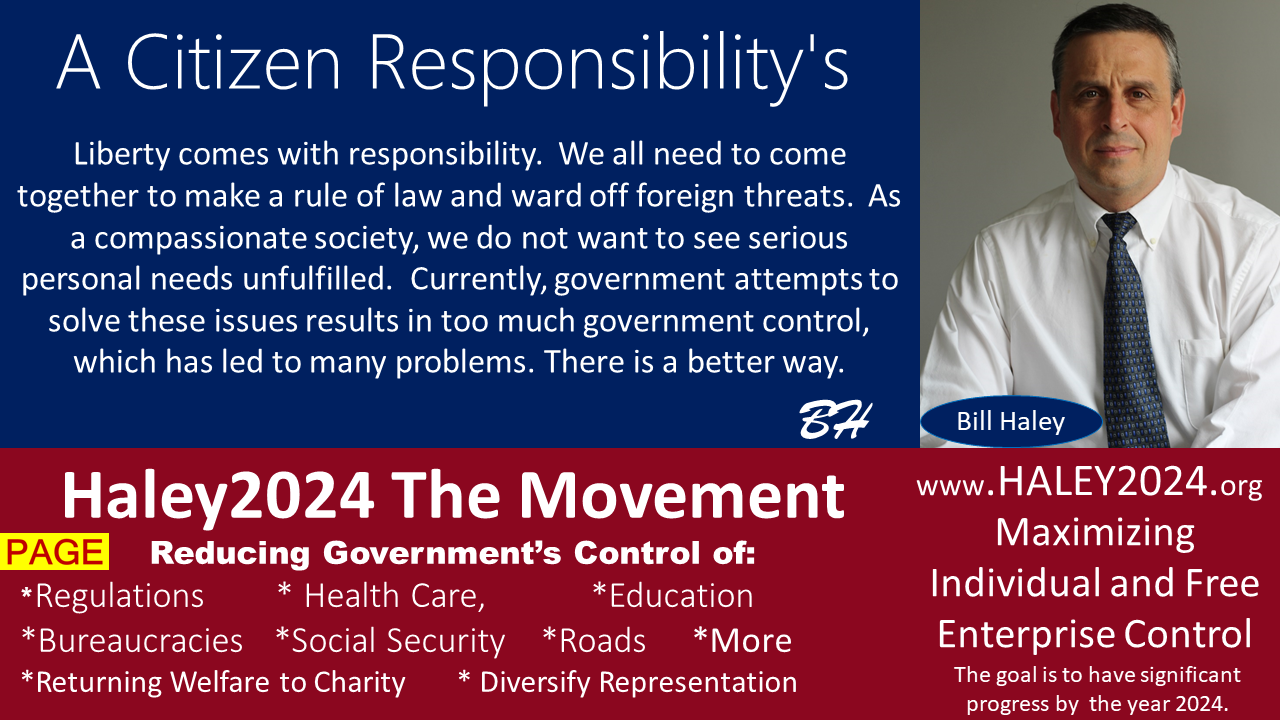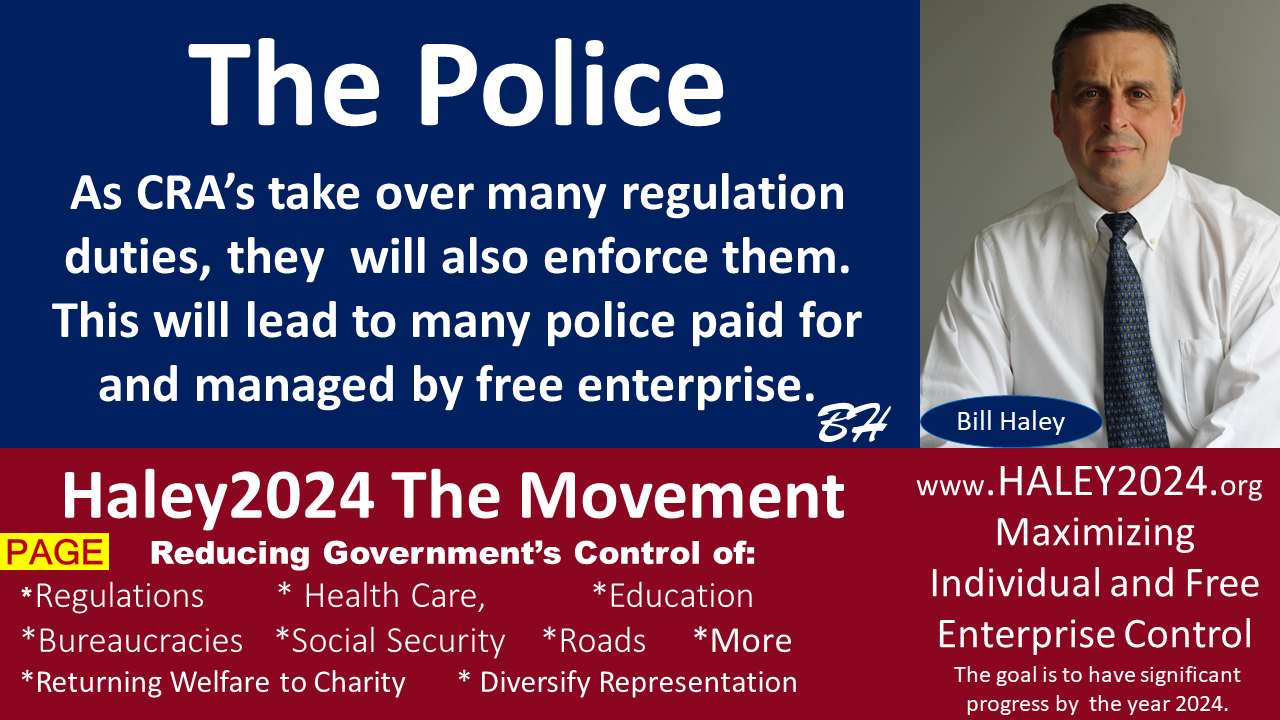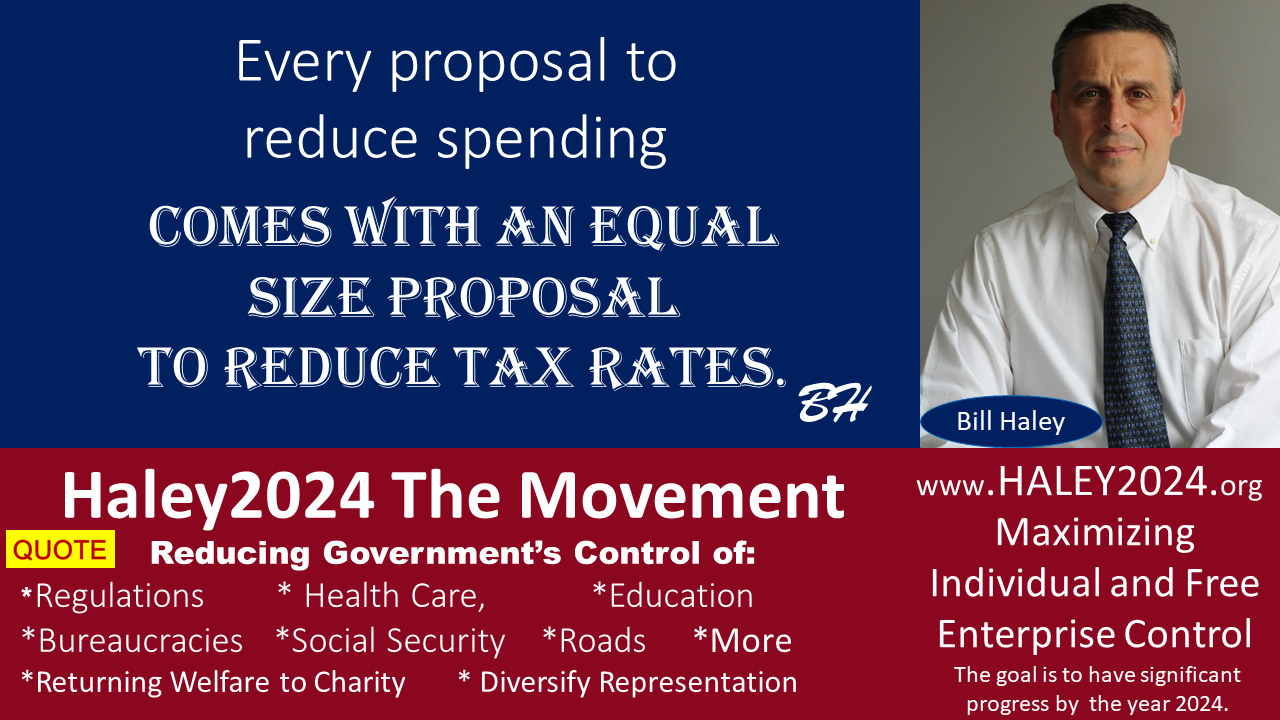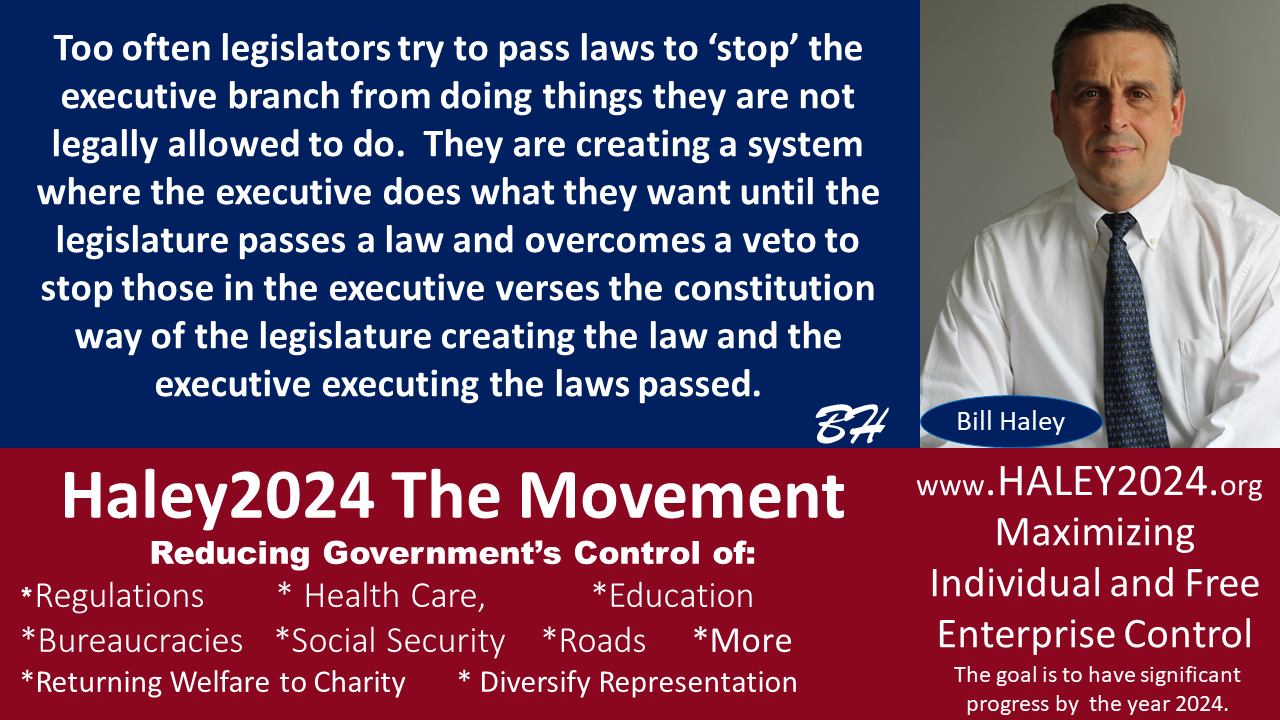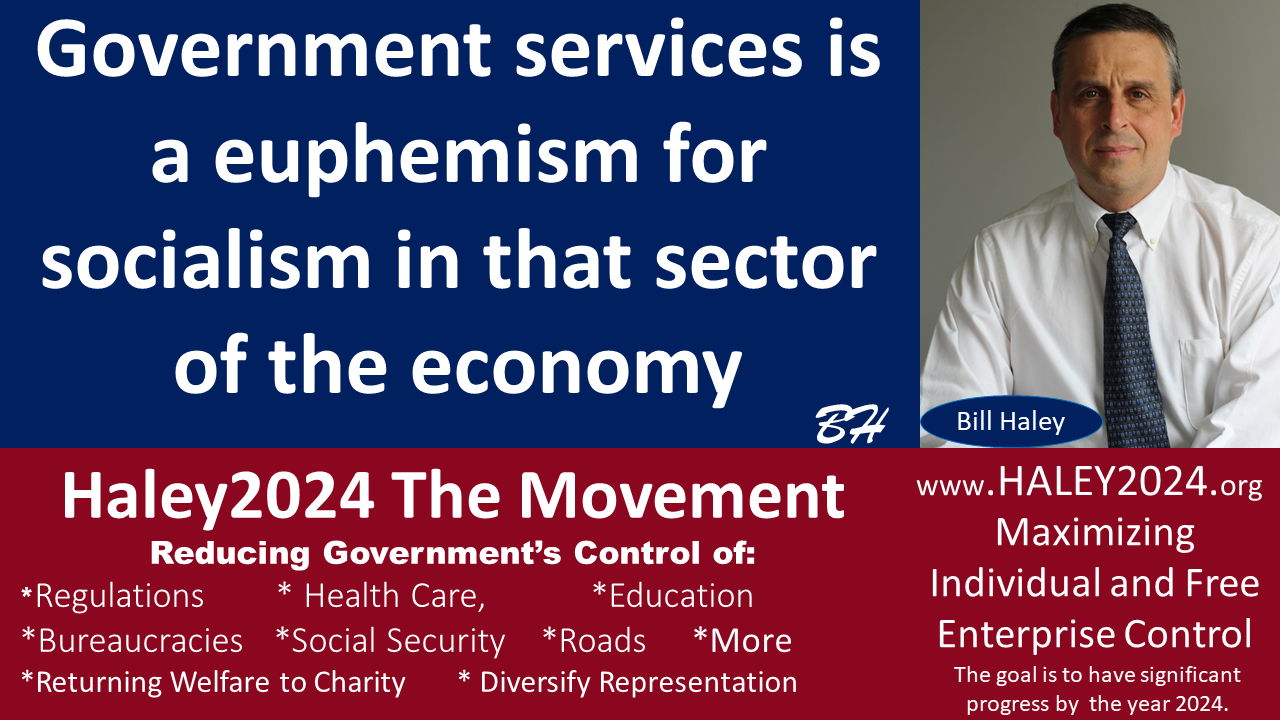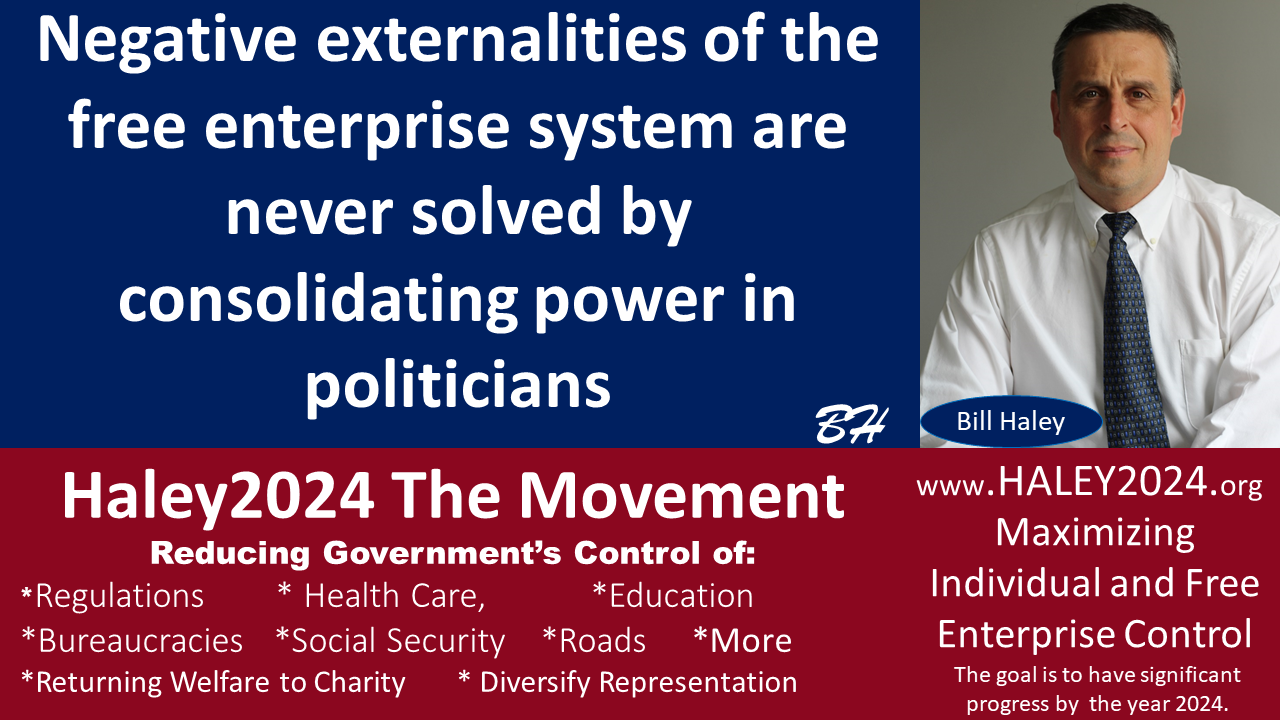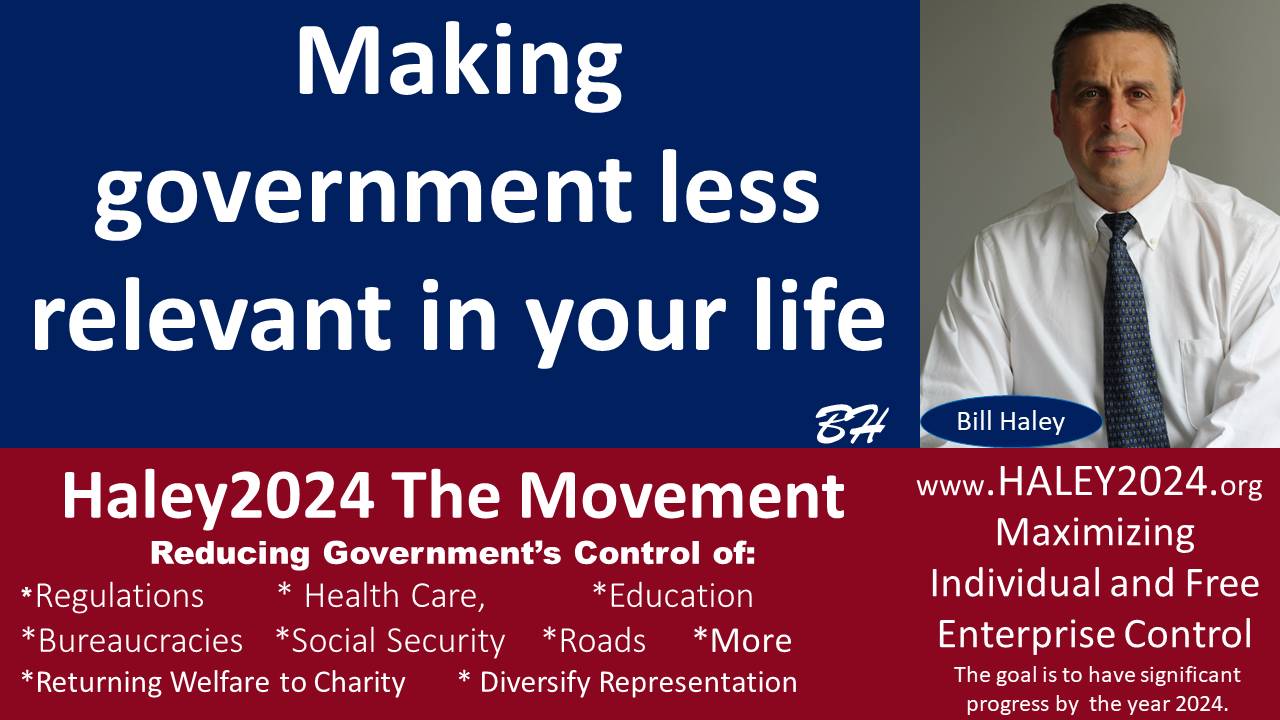| Haley2024 the Movement’s 9th proposed amendment to the US Constitution: If the majority of all the state's highest court justices, declare a subject matter to not arise under the U.S. Constitution nor otherwise a federal question, the U.S. Supreme Court and all federal inferior court’s ruling on that matter will be moot and void. The same majority has the power to enforce the Tenth Amendment by declaring a federal government law, program, spending, executive action among other Federal actions to be beyond the powers authorized by the constitution. |
| Note on the 9th: Every branch of government needs checks and balances. Every state will have nine state justices (every state is a little different, but all states will get nine as defined by each state’s legislation). There will not need to be a case arising, governors or state legislators could summit proposals to their justices. Once thirty percent of state justices request the exact wording of a proposal, all the justices will have six months to make their declaration. |
| Example 1: Marriage law is outside the powers authorized in the constitution. Example 2: Retirement planning is outside the powers authorized in the constitution. States Have Allowed the Feds to Squat on Their Rights for a Century, Time to Kick Them Off! States need a way to tell the federal government that they are outside the bounds of the US Constitution! |
| The Federal Supreme Court’s job is to protect the US Constitution by ruling on the constitutionality of federal legislation and to ensure states are not infringing on individual rights listed in the Federal Constitution. Haley2024 the Movement proposes a US constitutional amendment giving state supreme court justices the authority to declare federal legislation, executive action or judicial rulings outside of US Constitutional limitations. |
| The US Supreme Court currently decides if the subject matter is within the bound of the constitution. The proposal here is to change the group that determines if the subject matter arises under the US Constitution, in other words, federal justiciability. Every state would choose nine of their top justices to have an additional duty. Nine per state times fifty states would create a 450-justice panel. |
| Any state lawmaker or governor can post on an open government website created for this panel. These posts will be judicial questions regarding whether a subject matter arises under the US Constitution. These 450 justices look over the posts and if 30% or 135 justices declare a question valid or similar to granting a Writ of Certiorari, then all 450 people in this panel must rule on the issue within six months. There might need to be a limit of the top ten a year. |
| If 50.1% or 226 justices rule the subject matter does not arise under the constitution, then federal action on that subject matter within all three branches must come to an end. This 450-justice panel cannot stop bad federal judicial rulings just because they are bad. If it clearly deals with the Bill of Rights or a listed constitutional power, the panel would rule the subject matter falls under listed constitutional authority or protecting listed natural rights. |
| Marriage is not in the US Federal Constitution; however, it is in most state constitutions. That subject matter does not arise, and the 450-justice panel should rule such. Before the 1930’s, the justices on the supreme court did not see federal authority for Social Security listed in the US Constitution. FDR replaced many justices and receive ‘permission’ to start a truly disastrous program. |
| The states never signed on to a constitution with a pension plan listed as an authority, thus it would be ripe to be declared to not arise under the US Constitution. Yes, there is a responsible transition. It would likely be ruled that the subject matter of education does not arise under the US Constitution and education spending and policies would have to stop at the federal level. |
| On the other hand, the First Amendment still arises, and state government would not be allowed to infringe on religious liberties when conducting education policies. Regulations, welfare among others would be ripe for being declared federally nonjusticiable. Currency arises under the constitution yet is done in an unconstitutional manner. The 450-justice panel could not rule the Federal Reserve nonjusticiable; all three federal branches need to exert their power to fix that issue. |
| The simply language of the constitution gave very specific authorities to the federal government. The Tenth Amendment put an exclamation point on the specific and limited nature of federal governmental powers. The founding fathers wrote on the subject that the Articles of Confederation was not strong enough, however gave a very measured increase of powers to the federal government. |
| For the first 150 years, except for the civil war and World War One, federal spending did not top 5% of GDP, About 100 years ago, federal spending quickly climbed to about 20% of GDP and stayed there. The increased spending meant very real increases in control and power over areas the constitution did not delegated to the federal government. |
| In 1919, the congress KNEW they did have the constitutional authority to ban or restrict alcohol. For 130 years, the federal congress did not regulate commerce. Congressmen know if they wanted to ban alcohol, they needed a constitutional amendment. However, soon after congress passed, the courts allowed, and the president implemented regulations. |
| The federal government also taxed the people of the states to bribe the state governments to give up control. A prime example of current day (2018) abuse is Medicaid Expansion. The federal government is offering states money equivalent to roughly 3% of their state’s budget if they agree to go further into healthcare socialism. |
| State lawmakers see that their citizens are being federally taxed regardless if money is coming back to their state. The price of taking the money is a greater loss of control by the state and by citizens of their state in their health care. The founders, nor anyone within the first 200 years of this republic ever contemplated that the US Constitution give power to the congress, the president, nor the federal courts the authority to define marriage. |
| Marriage is not found in the US Constitution therefore, it is not justiciable to the US Supreme Court. The US Supreme Court defining marriage is a very legislative endeavor. Since the US Constitution states that ‘All legislative Powers herein granted shall be vested in a Congress of the United States’, the court went beyond their Authority. Even more egregious, they legislated at the state level. |
| If the prohibition of the ‘it is mean’ clause of the US Constitution really did exist and applied, the only remedy is voiding the marriage laws and allowing the states to write new marriage laws or staying without a marriage law. In the last several decades, many people challenged the traditional definition of marriage. Therefore, within recent history, many states restated the definition of marriage as between one man and one women with ballot initiatives, resolutions, legislations and state constitutional amendments. |
| All these, at different strengths, gives non-severability to the law. The citizens and lawmakers showed great importance of the definition of marriage. A court cannot change the central point of a law. The court did not just cut an unconstitutional part of the law out, it WROTE in words to the law. When referring to marriage law, the definition is the most important aspect of the law. |
| Nowhere in our US Constitution does it limit states in protecting their citizen’s lives. The justices of the US Supreme Court ruled that states CANNOT protect their citizens lives until a they reach a certain age. Regardless of your opinion on abortion, the federal government simply was not given that power. If the power was given, it would be the legislative branch deciding, not the US Supreme Court. |
| In fact, the US Constitution was created to ‘establish Justice, insure domestic Tranquility, provide for the common defence, promote the general Welfare, and secure the Blessings of Liberty to ourselves and our Posterity…” the constitution was amended to state: “nor shall any State deprive any person of life, liberty, or property, without due process of law”. These words were overshadowed by an unstated right in 1973 by 5 justices that unjustly, but effectively wrote it in the constitution. |
| The constitution gives “ALL legislative powers to congress”, however the court will often rule in a way that creates or changes legislation. Certain justices or judges take a certain phrase such as equal protection from the constitution and stretches it incredible out of context or clear meaning to disallow anything they consider mean or unfair. Is the next president constitutionally allowed to follow the law as written and not give subsidies to people if their state did not set up an exchange? |
| For the longest time, each branch of government tried to protect their turf by fighting back encroachments. However, for the last several decades, the strategy has changed to allow the encroachments if it furthers your policy positions. If President Obama pushed DECA for illegal immigrants against very clear legislation, many legislators that wanted legislation changed, however could not get it passed, just cheered when current legislation was stomped-on and illegally ignored. |
| President Obama and president Trump both were/are disobeying very clear immigration laws and even totally usurping legislative power by proactively implementing policies that are clearly forbidden. Judges are even ruling that because Obama, not only ignored law, but gave benefits in direct violation of law, that Trump also must follow suit and proactively violate the law. We Should Stop the Funding of Programs and Setting of Policies Through Lawsuit Settlements |
| This blog could go on and on. Over 75% of the federal budget is spent on items not listed in the US Constitution. Moreover, much of this money is used to bribe states to control regulations and to increase the level of socialism. The federal government takes/taxes from everyone and then tells states they can have some of the money if they have more government control. The federal responsibility should be mainly dealing with foreign policy with the military being ready as the last resort. |
